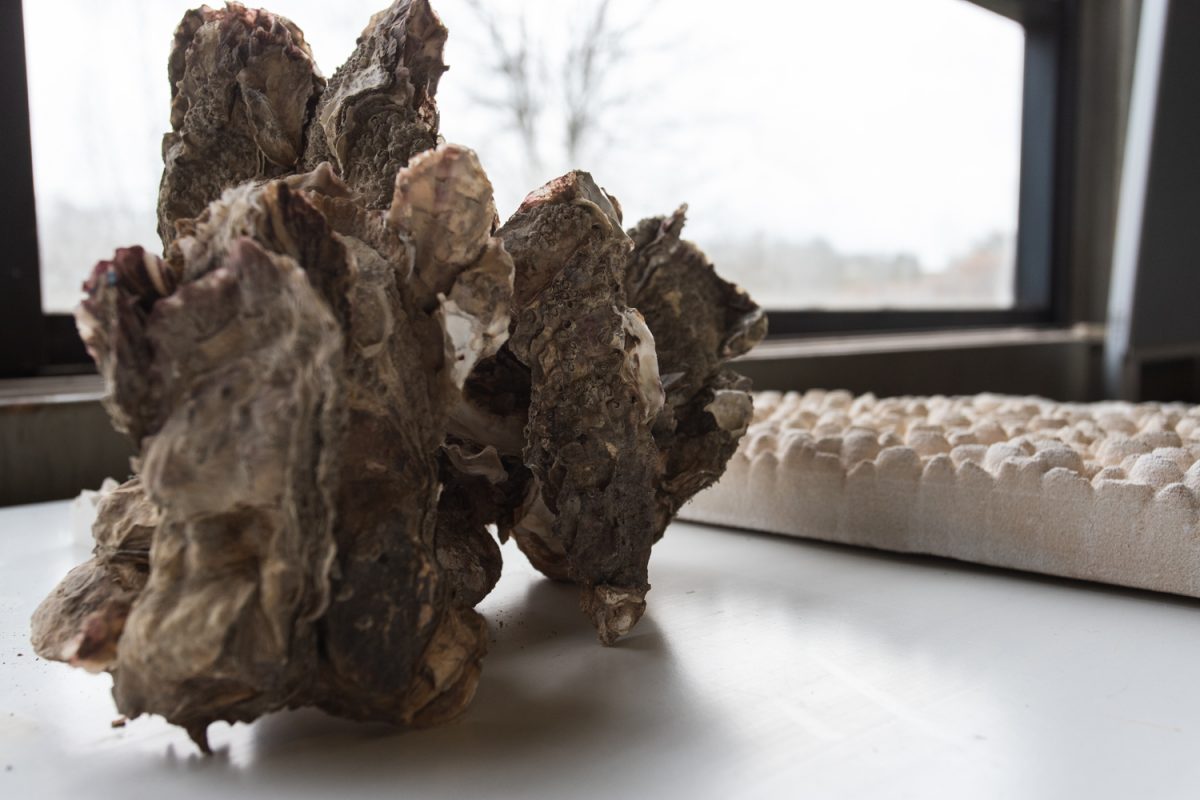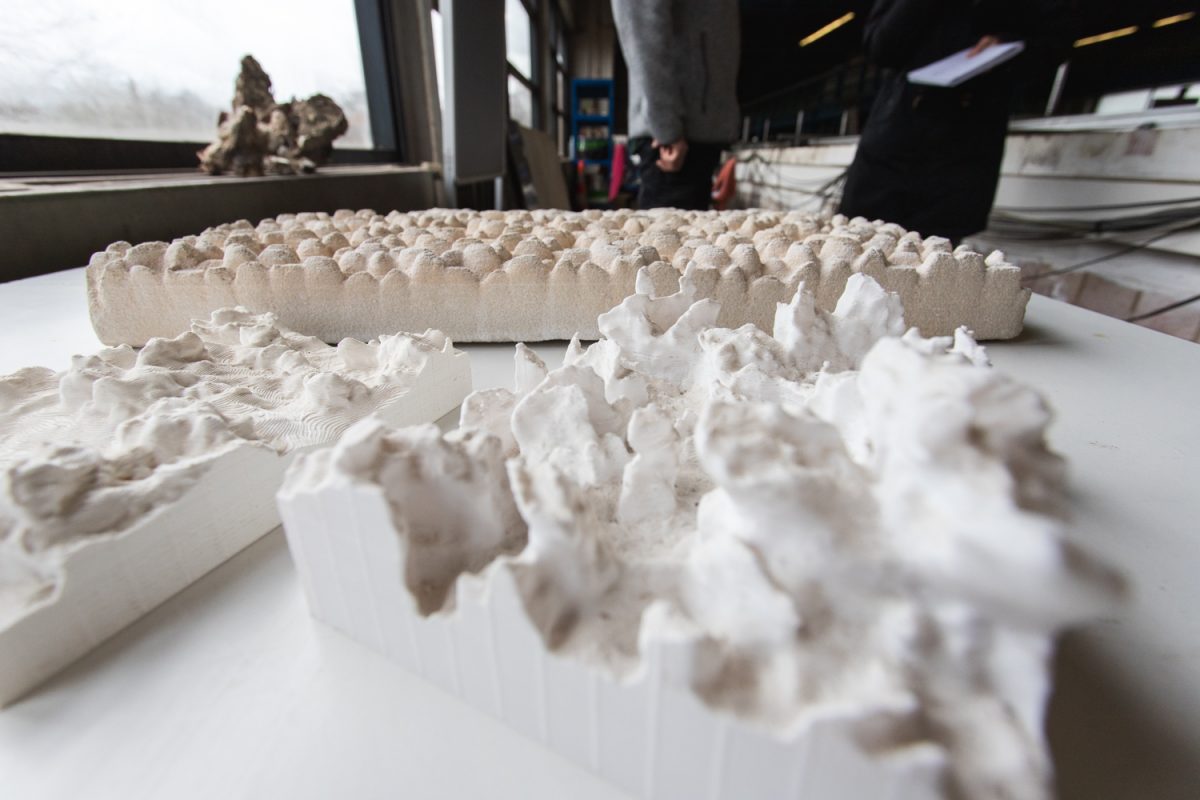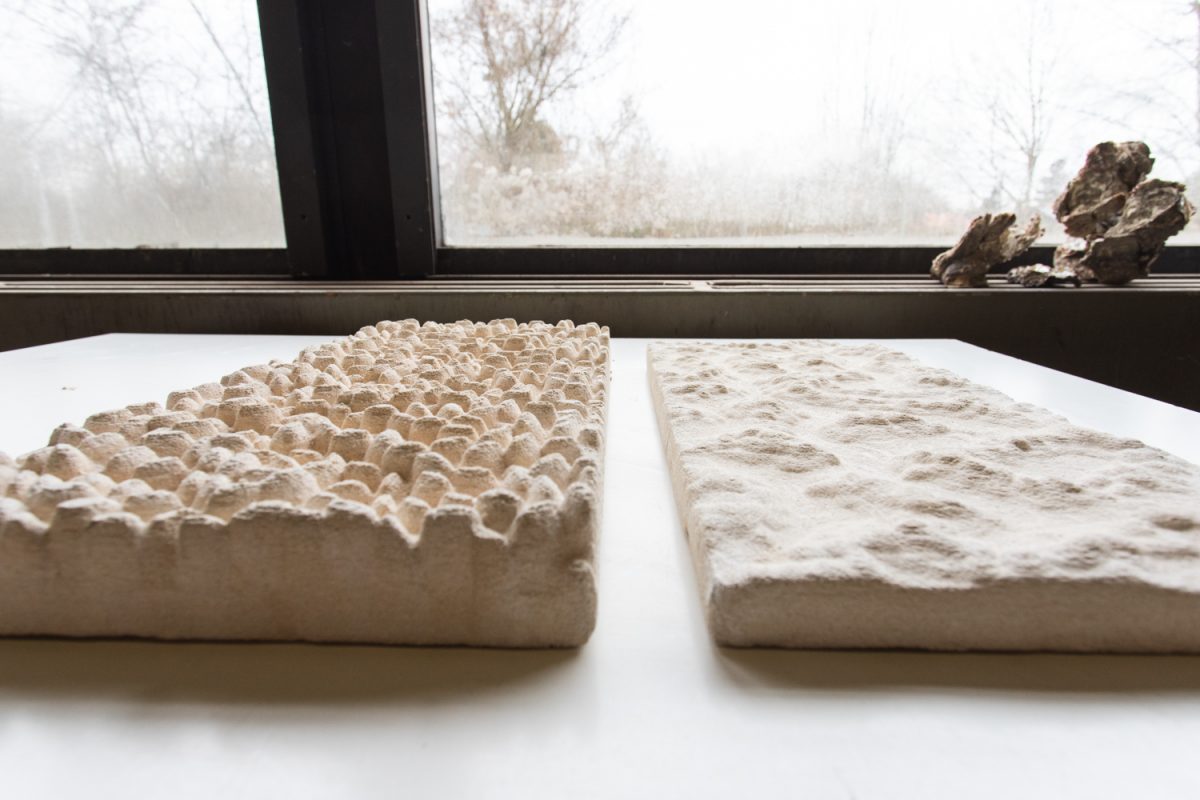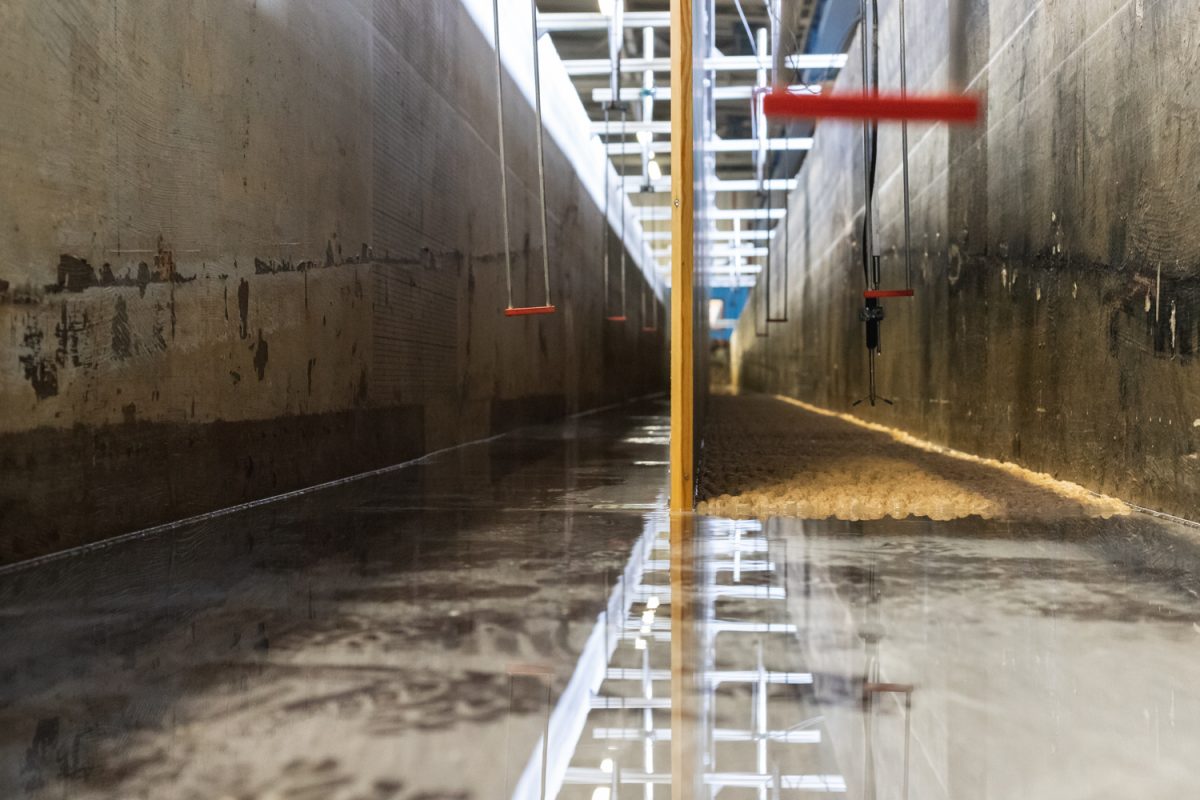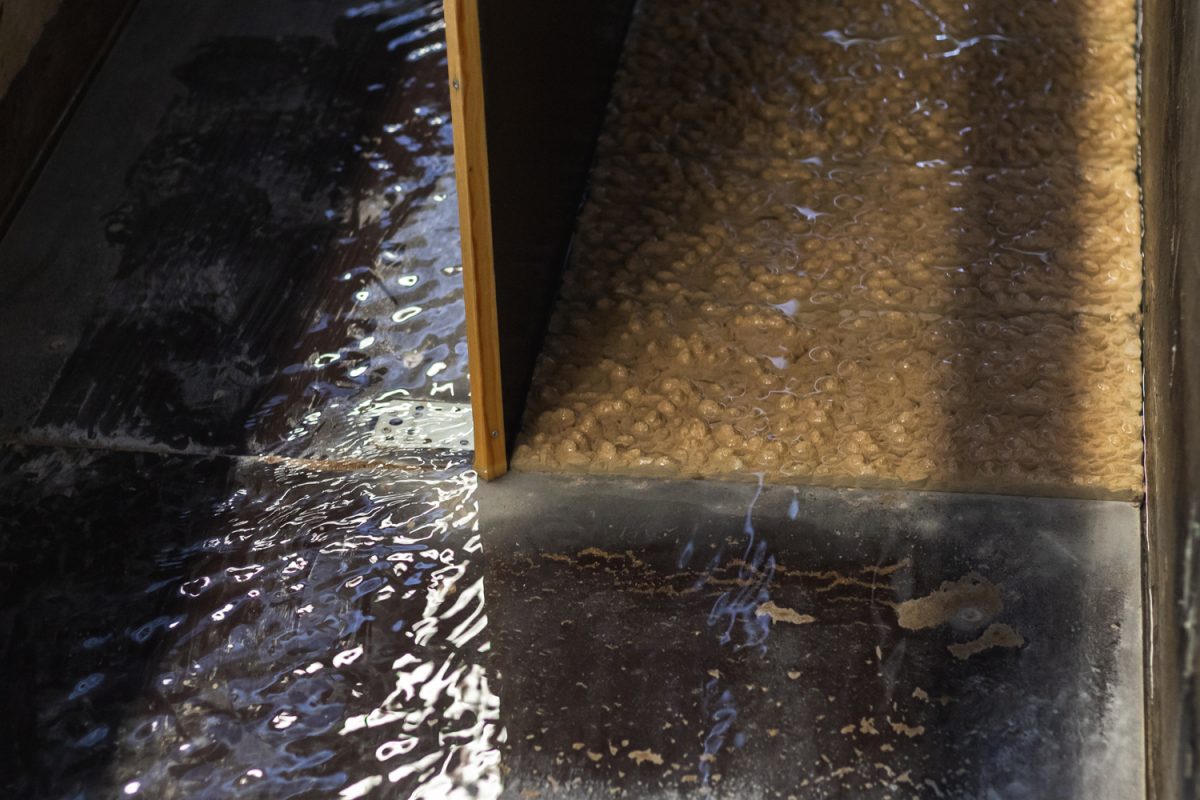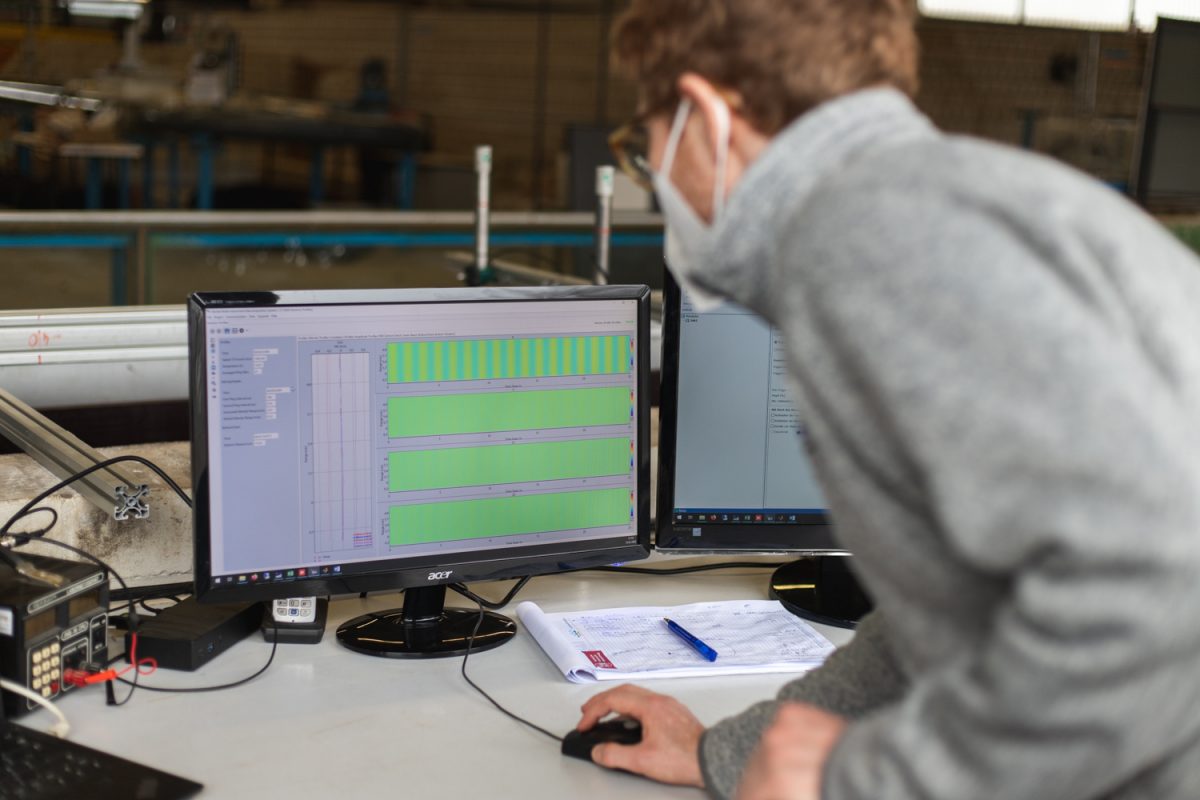Instead of the Wadden Sea: Oyster reefs in the wave channel What influence the Pacific oyster has on waves and currents
It has come to stay. The Pacific oyster is spreading more and more in the Wadden Sea. The Leichtweiß-Institute for Hydraulic Engineering and Water Resources (LWI) is investigating what effects this has on nature and coastal protection. Using oyster reef models from the 3D printer, the team recently analysed the effects of the extremely rough shell surfaces in the wave channel.

Jan Hitzegrad (l.) and Dr Oliver Lojek show the various shell models produced with the 3D printer. Photo credit: Max Fuhrmann/TU Braunschweig
The oysters stand close together in the Wadden Sea and now form entire reefs, such as in the Kaiserbalje tidal creek on the Hohe Weg mudflats between Wilhelmshaven and Bremerhaven. The Magallana gigas has spread here over the past 20 years, displacing the previously typical mussel beds. They find good living conditions in the nutrient-rich mudflats: They can grow in the area and have hardly any predators. The expansion of the oysters, which are considered robust, is probably favoured by climate change, which also leads to higher water temperatures.
The oyster structures are firmly attached to each other: even with a hammer and chisel they are difficult to work on. Compared to mussel beds, they have a higher resistance to hydromechanical loads, i.e. waves or currents. Thus, they change their environment and function as “ecosystem engineering species”.
Reality recreated in the lab
For their experiments, the scientists recreated the oyster reefs. Based on field data, they developed models together with the Institute of Structural Design (ITE), which the team from the Institute of Building Materials, Concrete Construction and Fire Safety (iBMB) produced using the particle bed 3D printer. In the process, of course, the researchers had to greatly simplify the models in order to print them well. “The fact that individual oysters are larger cannot be taken into account here, we are concerned with the effect of the entire reef,” explains Jan Hitzegrad, a research associate at LWI. “With the 3D models, we reproduce reality in the laboratory under controlled conditions.”
As a result, an oyster reef and a mussel bank now lie in the wave channel. Eight square metres each were printed. The differences are not only evident in the mussel size, but also in the degree of roughness of the surfaces. The extremely rough surfaces of the oyster reefs have never been seen before in the Wadden Sea. The researchers assume that they significantly change the surface properties of the seabed and influence waves and currents.
Shell tiles in the wave channel
To test the effects, the research team divided the 90-metre-long wave channel into two sections. On one side, the scientists laid the shell tiles, i.e. the printed oyster models. They left the other side blank as a reference surface. They have analysed 50 different combinations in the past months. All in all, they have conducted around 300 experiments. As in the Wadden Sea, the researchers have repeatedly rearranged the mussels. So there are areas where the oysters are close together, but also those that are interrupted by areas of sediment. “One would assume that the impact would be greater if the mussels were densely packed,” says Dr Oliver Lojek. “Quite the opposite: due to the edges and the increased roughness effect, this setting looks like a pothole track.”
Wave heights, wavelengths and velocities that occur due to these new structures were determined by the researchers during their experiments. This allows them to assess wave-attenuating and flow-reducing effects. Now it is a matter of processing the results in mathematical models in order to ultimately understand the large-scale effects.
About the projects
BIVA-WATT: The aim of the project is to shed light on, better understand and quantify the impacts of the immigrant Pacific oysters and naturally occurring mussels from a biological as well as coastal engineering perspective. It is funded by the Federal Ministry of Education and Research (BMBF) with about 807,900 euros. In addition to the LWI’s Department of Hydromechanics, Coastal and Ocean Engineering, the Institute of Structural Design (ITE) at Technische Universität Braunschweig, the Ludwig Franzius Institute of Hydraulic, Estuarine and Coastal Engineering at Leibniz University Hannover, the Senckenberg am Meer Research Institute and smile consult GmbH are also involved.
Coastal Futures: The project is a contribution to the research mission “Schutz und nachhaltige Nutzung mariner Räume” (Protection and Sustainable Use of Marine Spaces) of the German Marine Research Alliance (DAM). “Coastal Futures” develops and simulates future use scenarios in the North Sea and Baltic Sea, including coastal areas and estuaries. It examines the efficiency of current protection measures and develops new management options together with stakeholders from administration, industry and the public. The project focuses on climate impacts and land use pressures from offshore renewable energy production, fisheries, near-natural coastal protection and eutrophication of land. It is coordinated by the Helmholtz Centre Hereon and funded by the BMBF with 5.5 million euros.


